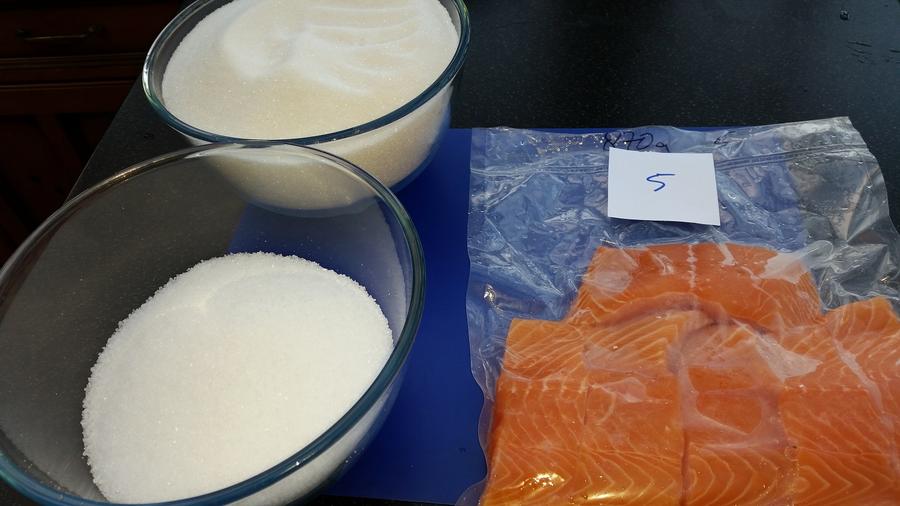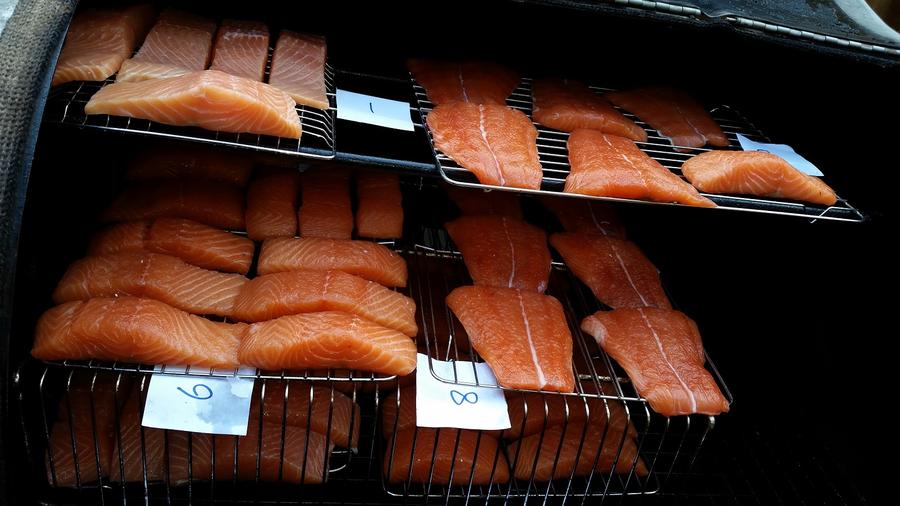There has been a lot of discussion on here recently about curing methods for salmon. Different methods have been tried by different people and there have been different views as to the saltiness of each. As everyones assessment of the level of salt will be subjective and different people have different salt tolerances, next weekend I plan on getting 50 x 140g (5oz) skinless salmon fillets to perform a direct comparison between the different curing methods.
To make this a true comparison of the individual curing methods I intend to take each up to the same point before cooking them in an identical way and doing a side by side blind taste comparison.
A number of you have shared your curing and smoking methods with us over the last few weeks/months and so if any of you would like me to specifically include your method(s) of curing in the trial please can you reply with the definitive method that you use. Whether it is a wet or dry brine, the amount of type of salt and sugar used, the amount of brine in contact with the fish and for how long etc.
If I do not get sufficient responses I will trawl back through recent posts and then let people know whose cure method I am using. If I get too many responses I will unfortunately have to be selective and similar methods of curing may have to be combined. I would be looking for a maximum of 5 different cures as this will give me a good sample of 10 salmon fillets per cure.
As different peoples tastes vary I will refrain from rating the different methods as "good" or "bad" but will simply rank them in order of detectable saltiness along with appropriate comments.

To make this a true comparison of the individual curing methods I intend to take each up to the same point before cooking them in an identical way and doing a side by side blind taste comparison.
A number of you have shared your curing and smoking methods with us over the last few weeks/months and so if any of you would like me to specifically include your method(s) of curing in the trial please can you reply with the definitive method that you use. Whether it is a wet or dry brine, the amount of type of salt and sugar used, the amount of brine in contact with the fish and for how long etc.
If I do not get sufficient responses I will trawl back through recent posts and then let people know whose cure method I am using. If I get too many responses I will unfortunately have to be selective and similar methods of curing may have to be combined. I would be looking for a maximum of 5 different cures as this will give me a good sample of 10 salmon fillets per cure.
As different peoples tastes vary I will refrain from rating the different methods as "good" or "bad" but will simply rank them in order of detectable saltiness along with appropriate comments.
Last edited:






























